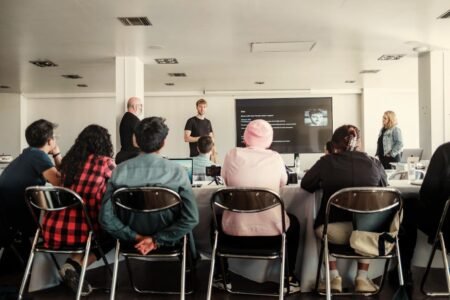In today’s digital age, where technology permeates every aspect of our lives, security instructions have become a prevalent concern. From personal information to critical infrastructure, the potential damage caused by these intrusions can be catastrophic.
To effectively protect ourselves and our systems, it is crucial to understand the different types of security intrusions and their impact. Whether your company offers customers VoIP phone systems or a non-digital product, ensuring you are clued up and protected is crucial in the modern age. Keep reading as we explore some common security intrusions and delve into their potential consequences so you know what to look out for.
1. Malware Attacks
Malware, short for malicious software, is a broad term encompassing various types of software designed to infiltrate and compromise computer systems. Common examples include viruses, worms, Trojans, and ransomware. Malware can be distributed through infected websites, email attachments or removable media. Once inside a system, it can steal sensitive data, disrupt operations, or render the system inoperable.
The impact of malware attacks can be severe, ranging from financial losses due to data theft or ransom demands to the disruption of critical services. In the case of ransomware, for instance, organisations may face significant downtime, loss of productivity, and reputational damage.
2. Phishing and Social Engineering
Phishing attacks involve deceptive techniques used to trick individuals into revealing confidential information such as passwords, credit card details, or social security numbers. Phishing attempts often masquerade as legitimate emails, websites, or messages, making it difficult for recipients to discern their fraudulent nature.?
Social engineering, on the other hand, exploits human psychology to manipulate individuals into divulging sensitive information or granting unauthorised access.
The impact of successful phishing attacks can be far-reaching, leading to identity theft, financial fraud, or unauthorised access to personal and corporate accounts. Additionally, targeted organisations may suffer reputational damage and legal consequences, eroding customer trust.
3. Denial-of-Service (DoS) Attacks
Denial-of-Service attacks aim to overwhelm a targeted system, network, or website with overwhelming traffic or requests. By flooding the target with a deluge of requests, legitimate users are denied access, disrupting services. Distributed Denial-of-Service (DDoS) attacks amplify the impact by employing multiple sources to initiate the attack simultaneously.
The consequences of DoS attacks can be severe, particularly for businesses heavily reliant on online services. Downtime caused by these attacks can result in financial losses, decreased customer satisfaction, and damage to the organisation’s reputation. Also, in critical sectors such as healthcare or finance, lives or financial stability may be at risk.
4. Insider Threats
Insider threats occur when individuals with authorised access to a system or organisation misuse their privileges. These threats can take various forms, including data theft, sabotage, or unauthorised access to sensitive information. Insiders may be motivated by financial gain, revenge, or coercion.
The impact of insider threats can be significant, as they often exploit the trust placed in authorised individuals. Organisations may suffer financial losses, damage to intellectual property, or reputational harm. Detecting and mitigating insider threats require robust security protocols, comprehensive access controls, and continuous monitoring.
There are companies who can simulate some of these attacks and even offer offensive capabilities like penetration testing to simulate an attack and test a company’s response and check how robust it is.
5. Advanced Persistent Threats (APTs)
APTs are sophisticated, targeted attacks launched by well-resourced adversaries. These attacks are characterised by their stealthy, persistent nature, often remaining undetected for extended periods. APTs involve multiple stages, including reconnaissance, infiltration, lateral movement, and data exfiltration. They may employ techniques such as zero-day exploits, spear-phishing, or supply chain compromises.
The impact of APTs can be severe, particularly in sectors such as government, defence, or critical infrastructure. Adversaries can gain unauthorised access to sensitive data, compromise national security, or disrupt essential services. APTs require extensive resources and expertise to detect, mitigate, and prevent.







